 |
Piece By Piece: Test Estimation and Planning in Agile Teams The iterative agile methodology provides a clearer vision, smaller time scale, and closer planning horizon. The authors look at approaches to estimation and planning, from product backlog grooming to task-estimating tables and more.
|
|
 |
Building Highly Productive Teams Using a Commitment-to-Progress Ratio: Work Committed vs. Done This article explains methods to build a team that will embrace "required work" and deliver robust software in a predictable fashion. It proposes a measure that helps calculate the throughput of an agile team by comparing work committed to work actually done.
|
|
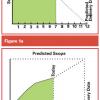 |
Feel the Burn: Getting the Most Out of Burn Charts Burn-down charts have become a popular project artifact, but too often, people accept the default chart from whatever project management tool they're using. What choices can we make about the chart format and scale that will help us create charts that answer the questions that are really important to us? And when the chart looks "funny," what could it possible mean?
|
|
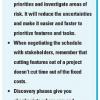 |
Avoiding Half-baked Discovery It can be difficult to explain to your customer why cutting half of the features doesn't cut half of the time and cost. Every software project has fixed costs that often get overlooked in project planning—setting up development environments, ramp-up, building frameworks, and setting up configuration management to name a few. Read on for some ideas on how you can position this with your customer.
|
|
|
|
Keys to Top-Notch Estimates If the construction industry estimated projects as poorly as the IT industry does, we would still be living in mud huts. Yet inaccurate project estimates have become the norm in the software industry. Find out how you can turn your estimates into reasonable predictions of project performance.
|
|
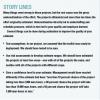 |
Seasons of Software Development In this installment of Management Chronicles, Peter Clark introduces us to a programmer who is trying unsuccessfully to complete a project mired in underestimation. Find out what you can do to keep your estimates in the free and clear.
|
|
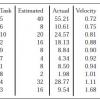 |
Beat the Odds You know that old saying that the best way to schedule software development is to come up with your best guess and divide by three? In this article, Joel Spolsky explains how to take the guesswork out of estimations by simulating schedules and creating probability curves that are more than just a shot in the dark.
|
|
|
|
A Look at Testimation.com Getting approval for time and resources is a big challenge. Geoff Horne takes a look at how Testimation.com can help provide test managers with fair and reasonable estimates.
|
|
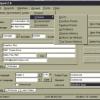 |
A Look at Cost Xpert John Magill found Marotz's Cost Xpert 2.0 to meet his requirements, offer some important relevant program factors, and permit him to change or adjust the factors to establish an estimating window or boundaries, all at a competitive price.
|
|
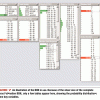 |
Bayesian Belief Nets: Predicting Defect Rates and Resource Requirements A Bayesian Belief Net is a graphical network that represents probabilistic relationships among variables. Here is a studied look at this causal modeling technique as applied to defect prediction and resource estimation.
|
|

